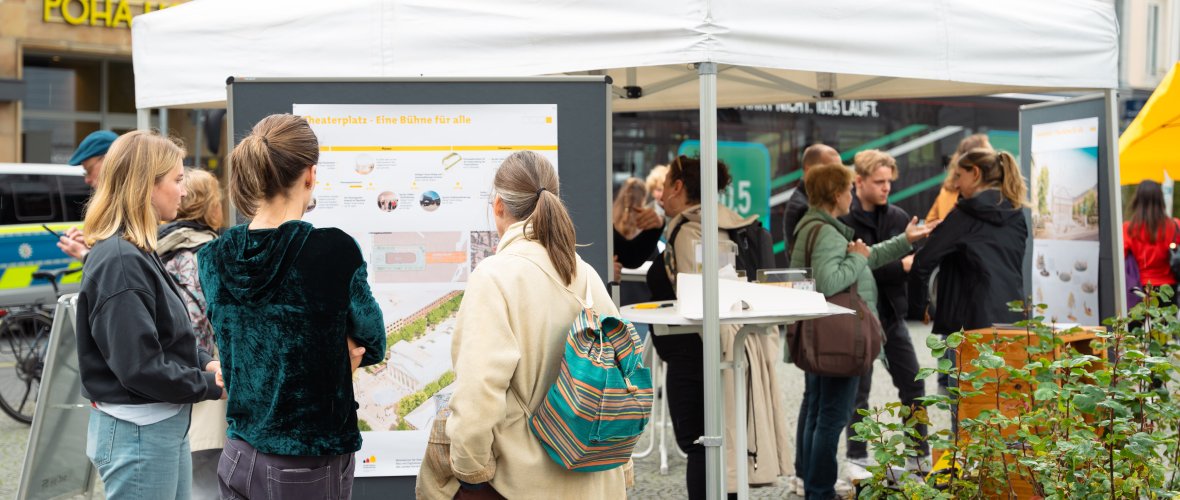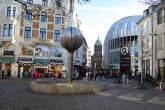Urban development construction projects
The city of Aachen is facing major challenges. These include, for example, the urban land-use planning for the Büchel old town district, the new Theaterplatz, numerous framework plans and urban development qualification procedures. They also include the creation of good residential and care locations, new daycare centres and university complexes, the guidelines for inner-city outdoor catering, the finalization of the landscape plan, the launch of heat planning and the design of the energy transition in listed areas.

Spotlight on!
Urban development construction projects
City
City center
- Theaterplatz
- Eastern city center
- Büchel old town quarter
- Guidelines for outdoor catering
- City center concept 2022
- Redesign of the Turmstrasse underpass
- Premium footpaths
- Review: City center concept 2002
- Streams
- Spa and rehabilitation location Burtscheid
- City center design manual
- Lighting projects in Aachen
- New Kurhaus
Neighborhoods and city districts
Urban development

There are several areas in Aachen where projects are currently being implemented with the help of urban development funding and will be in the coming years. The challenges in terms of content are as varied as the districts themselves:
In the city center, the focus over the next few years will be on the eastern part of the city center. The ongoing structural change requires an examination of this area and a concentration of measures.
- The lead project in Beverau is the conversion of the former equestrian farm "Gut Branderhof" into a neighborhood and meeting center.
- In Haaren, the focus is on upgrading public squares and green areas.
- The "Socially Integrative City Aachen-Nord" and Brand development programs have already expired; individual measures are still being completed here. The Aachen East area was already completed several years ago.
- An integrated urban development concept is currently being drawn up for the Forst / Schönforst / Driescher Hof area, which will form an important basis for the future development of the district and the acquisition of funding.
With urban development funding to the "city of tomorrow"
Cities and municipalities are subject to constant change. Federal and state urban development funding has been supporting municipalities in actively shaping this change for more than 50 years. The aim is to reduce urban planning deficiencies and development deficits, take preventative action to an increasing extent, improve economic performance and develop established building structures in a contemporary and sustainable manner.
We are combining demographic, ecological and economic aspects. This is a complicated project that can only succeed in consultation with residents and business people. It is important to think ahead about development scenarios for the coming decades and make Aachen fit for the future.

Integrated urban development concepts (IUDC) form the basis for urban development funding and the framework for the interdisciplinary, strategic development of neighborhoods. Specific individual measures respond to the challenges and generally enjoy federal and state funding amounting to 80 percent of the costs.
From concept development to project implementation, the participation of citizens and stakeholders in tailor-made formats plays a central role. This enables participation at a local level and strengthens the identity with the neighborhood, city and region. We want to lay the foundations for places or projects to continue to develop on their own after the funding measures have been completed.

There are therefore three priorities in urban development funding:
- Vibrant centers:
Regardless of whether they are downtown or district centers - they are attractive when life is pulsating. They have to offer something for everyone: for those who live or work here, who run a business or go to school - or simply visit the museum. - Social cohesion:
Where neighbors stick together, meet and care for each other, the quality of life increases. Especially in disadvantaged neighborhoods, we focus on the quality of living and create the conditions for a diverse range of socio-cultural activities. Green parks as meeting places for all generations, green spaces for sport, play, neighborhood and recreation are just some of the measures. And last but not least, the neighborhood offices as "hands-on centers" for everyone who wants to get actively involved. - Growth and sustainable renewal:
Vacant shopping streets or industrial buildings that are no longer needed often shape the character of cities in transitional periods. Innovative impulses, investments in the future and ingenious utilization concepts are required here. They breathe new life into these places and awaken the desire to live or work in the redesigned district.
Supported by:





